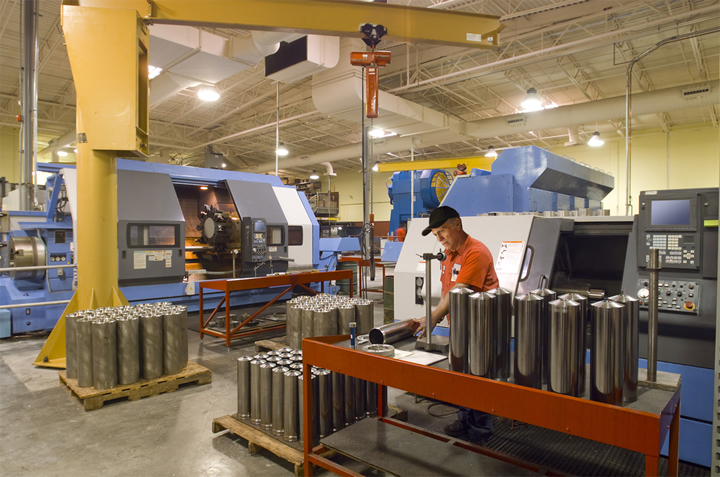How Factories and Manufacturers Can Create a Cleaner and Healthier Environment for Their Workers

Health is a top priority within factories. Workers must have the cleanest environment to uphold sanitation in the workplace. While the basics are necessary to cover — like standard cleaning protocols — it’s sometimes easy to overlook dust’s impact on human health.
When dust accumulates and reaches hazardous levels, it can cause respiratory issues and damage machinery. If it builds too much, manufacturers risk the threat of a fire. Instead, it’s critical to pinpoint the obstacles and create a plan to overcome them.
The Issues of Dust
The primary reason to get rid of dust in the factory is to create a healthier working environment. Though dust may seem too subtle to cause significant issues, it can lead to many outcomes.
For people with allergies, dust can intensify to the point where they can’t focus on their work. These particles can also irritate the throat, eyes and skin — with or without existing respiratory problems. Small dust particles can travel into the lungs, too, leading to another set of issues entirely.
A buildup of dust will also damage machinery. When a significant amount accumulates, it can clog gears or systems, causing them to break. This damage will be costly for manufacturers. Specifically, dust can clog HVAC systems. If this buildup occurs, it can not only break the HVAC unit, but it can also cause the dispersal of these particles throughout the air in the entire facility.
Too much dust will lead to OSHA fines or other fees that accrue during inspections. Though dust is a small factor, manufacturers must stay on top of its effects. If they don’t, the particles can build up to the point where they risk an explosion or fire due to their flammability.
After understanding the various effects dust can have on human health, manufacturers should then move on to taking action.
How to Keep a Clean Factory
Some factory workers may think to blow the dust out from the systems to clean them. However, this method comes with flaws — it can push the particles back into the air, making them harder than ever to clean up. Instead, manufacturers should focus on more effective alternatives.
Part of the reason dust is so challenging to keep up with is that it’s almost impossible to see once it breaks down into individual particles. The good news, though, is that the individual molecules floating through the air don’t have to be the primary concern.
Focus on the areas in which the dust accumulates the most. HVAC systems are a primary example. Manufacturers should regularly clean the system by replacing the filters every two or three months. This step allows the system to capture any dust in the ducts with brand-new filters.
Wiping surfaces down with damp, clean cloths is also an essential step. Depending on the factory’s size, employees can wipe down their stations as part of the closing routine. Then, managers can hire services to clean on the weekends if necessary.
One of the most critical steps, though, is to install a dust collector. This system acts as a vacuum, suctioning dust from the facility into one central spot. A dry dust collector will compile all the particles into one easy-to-clean area. On the other hand, a wet dust collector brings all the grime into a chamber of water, which helps keep the particles from redispersing.
The Benefits
As the factory gets rid of the dust by implementing the best proactive cleaning measures, employees will have a healthier working environment. With this clean workplace, worker satisfaction and productivity will increase.
The solutions for clearing dust are cost-effective, too. Without the proper cleaning protocols, the dust can add up and break machinery, cause fires or lead to various inspection fines. These costs could become too much for the factory to afford.
Instead, taking the proactive steps for a cleaner manufacturing environment will prevent the need to fix equipment or pay fines during inspections. Thus, cleaning dust is vital to the workplace for saving money.
In the long run, employee health will thrive. It creates a cycle of benefits — employees are happier and healthier at work, which boosts productivity, while the machinery stays clean and doesn’t spread the dust back into the workplace.
Adjusting During COVID
The COVID-19 pandemic has disrupted all aspects of life on the planet. While this novel coronavirus continues to spread unchecked, it’s more essential than ever that manufacturers focus on ways to maintain a healthy environment. Having too much dust could lead to breathing issues and worsen COVID-19 cases or weaken the immune system, making people more susceptible to it.
During this time, manufacturers must adapt to the safest COVID-19 manufacturing plant protocols. They include hand-washing, using the right personal protective equipment and sterilizing surfaces and equipment with ultraviolet light.
Employees should stick to their designated workstations and areas to avoid coming into proximity with other individuals. If someone does contract the virus, the factory should have protocols in place for testing, quarantines and paid leave.
Employers must plan to maintain employee health during one of the most infectious viruses in the past century. Since employees and managers already have to worry about the novel coronavirus, covering the bases by eliminating dust ahead of time is no longer an option — it’s a necessity.
Cleanliness and Health
The overarching priorities when dealing with dust in factories are cleanliness and health. These two factors are invaluable because employees depend on them to stay focused and to remain happy and healthy.
The above steps show the path forward for manufacturers. Identifying the issues will vary for each workplace, so it’s critical to do a thorough search in the factory. Then, taking action involves two parts – one where employees eliminate dust, and the other where everyone adapts to the new COVID-19 protocols. The workplace will then operate smoothly, providing everyone with a safe and healthy environment to thrive in.
Comments (0)
This post does not have any comments. Be the first to leave a comment below.
Featured Product

